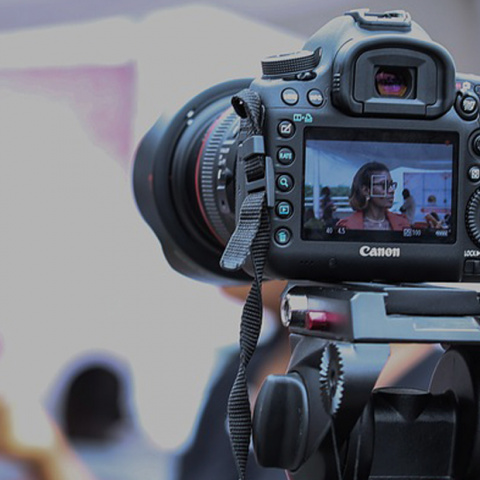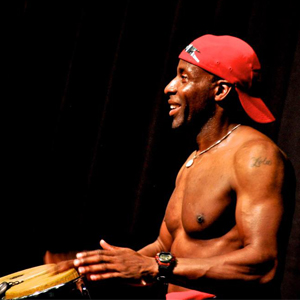You’re well-known for being an international choreographer, presenter, producer and author, but what have been some of your most memorable moments?
I think for me it would be teaching in, what people would view as, ‘un-aerobic’ countries when group fitness was in its infancy. For example, I went to places like Bulgaria and Hungary when they only really started doing aerobics and fitness, and they were doing it on a competitive level because they had a lot of gymnasts.
I was one of the original ambassadors involved in competitions, I was an emcee and I used to go around with the Aerobics Organisation of Great Britain and visit all these countries, not from a competitive perspective, but purely from an entertainment point of view.
For some of the countries to host these competitions, it was such a big thing for them and that was amazing. I’d arrive at the airport and I would be snapped by the paparazzi, treated like a superstar, I’d be in newspapers, and on the news and the radio. It was amazing because it was so new, having this experience and having people treat you that way.
I also stood out because people didn’t teach like me. I’d have my outfits, my bongos and my little presents to give away to all the people that couldn’t dance and couldn’t move. I’d pick the worse people in the room and reward them for showing up and putting in the effort. Going to those countries really was the highlight. Nowadays it’s all over the world, but back in the day, in the 90s, it was a real passion of mine to explore those new territories and meet new people as well.
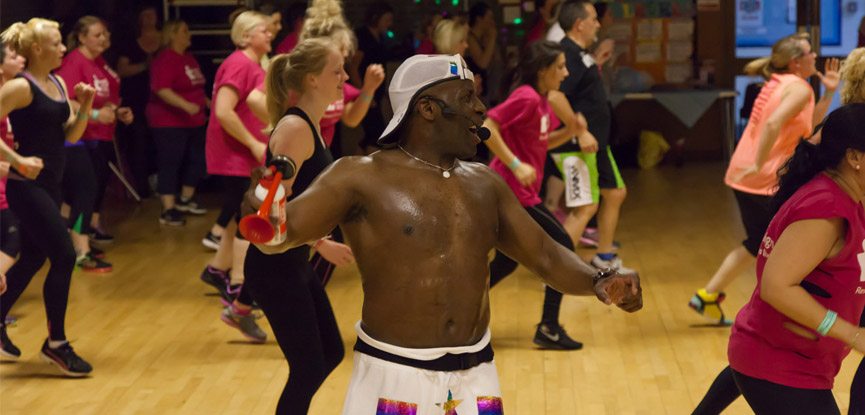
Another memorable moment was when I did a convention in Holland. They had a Dutch motivational speaker on at this location, they hired this amazing sound system, so when I stood on the stage it was like doing a pop concert because I sing and dance and rap and entertain the people whilst teaching, it was effortless to actually use this equipment.
I understand how people do big shows, how they feel on stage, because when your equipment is that superior, it becomes effortless to do the job. I’ll always remember not having to fight with the microphone or the acoustics or anything else. I was just being and doing, it came so naturally. Then I realised that at a very early stage in my career that the technical side of teaching was very important because of my style. So I would always pay attention to the equipment I would be using because the last thing I want to be doing in a sports hall is fighting with the sound system. Those highlights dictated my evolution as a teacher. If you think about it from that perspective, I would never do what I do today if I didn’t have those fantastic moments.
What first inspired you to become an exercise to music teacher?
I liked dance and I liked fitness back in the day and the inspiration came from the fusion between the two. I remember at 16 years of age being at a local health club and hiring out the hall. I went in, put some music on and just danced around. Unknown to me there were two women at the window watching me while I was doing all these moves and they opened the door and said ‘do you mind me if we come and follow you?’ and I said ‘okay…’. So they came in and followed me and I showed them these moves.
I didn’t know what I was doing back in the day. After I’d finished teaching them for about 20 minutes, they said thanks and went off. It was only when I left the club that the manager stopped me and said ‘we’ve just had two members come up to me and say how fantastic the dance they did with you was, what were you actually doing in there?’ I said I was just dancing to music I liked and they wanted to join in. She told me she taught on a Thursday night doing aerobics and I should come down and see.
I went down the following Thursday and it was packed with people, and when she saw me come in she ushered me right to the front. She ended up doing this fitness class and it was the first experience I had of being in that environment of group fitness. That’s really what inspired me to become a teacher. Also, it was a fusion of my previous experience of music and wanting to jump around to music. I liked entertaining people so it all came together. I got to live what I loved doing.
It’s great because you come off stage or finish teaching or you’re doing something that you really love and you walk away, you get that feeling of achievement, not only for yourself, but the people you’re showcasing to… and then you realise that it’s your job as well, so you get to smile again.
With all the success you’ve had, are there are career milestones, any goals you still want to achieve?
I’d like to further increase my audience online. Back in the 90s, early 2000s, my friends used to tell me that I was technologically ahead of the curve and I wanted to do things that the infrastructure didn’t allow for, things like videos. It’s so easy to do a video nowadays, but back when the internet was quite young from our perspective, I wanted to do things and engage with people in a way that the technology didn’t allow for.
I think in view of the question, I would say that it’s about having more people see what I do. The reason I say that is because I see comments on YouTube videos that I’ve done and when people comment they’re giving me the same kind of buzz that I used to get when I went into new countries. People get really excited when they see the fresh approach and energy I bring to my programmes.
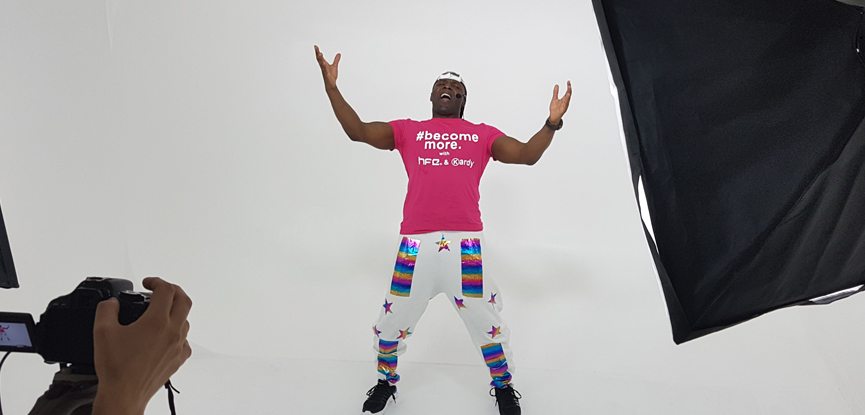
I’m doing a convention soon and I was probably one of the first people to present outside of the YMCA-sect, where it had evolved from back in the day. A lot of the teachers I’ve met have moved on from the organisation because the fitness landscape changed. However, because I keep reinventing the style of fitness I do, which is accessible to a lot of people, they cannot say no to it. I have so many people follow what I do and say how much they enjoy it. That to me is what keeps it fresh. Kind of like an aerobic Madonna…
What’s your take on the whole pre-choreographed set-up that exists today? Obviously, this is somewhat different to how you teach?
I’ve got a lot of experience being in this industry and mixing with a lot of people. From a diplomatic standpoint I’d say pre-choreographed programmes have their place, they have their positives, but also have their negatives. It depends what you know and more importantly it depends on the individual. When I was in New Zealand, many years ago, I did some training for some Les Mills instructors when the whole thing was in its infancy. I remember the main thing for those guys was that they looked at what I did and said ‘you’re really good at motivating people and getting information across, could you do a workshop for our instructors to help them push their personality into the framework when they’re teaching choreography?’.
I come from a completely different world, one where the personality fuels the delivery of the movement. I think you’ve got to allow for freedom of expression. One of the disappointing things about pre-choreographed stuff is that it doesn’t always allow for that. For example, if you’re in the moment and you see something happening in your class, you can react to it.
If you’re running a script that’s so tightly wound, it’s very difficult to react to that fantastic moment that’s just taken place. Whereas myself, I had a woman run topless through my class once and dealing with that is not really in any pre-choreographed script. You have to positively react to it. You can play with any situation that happens and still make people feel comfortable in your class.
I know many great instructors who teach pre-choreographed sessions and everybody is different to how they react in those situations. There’s a chance that an instructor’s personality could get lost, I’m not saying it absolutely does, but there’s a chance. In this day and age people grow up with concept classes, that’s all they know and it makes it very easy to put more of the same out there. As a positive, if someone’s are not that creative as a teacher then it can suit those instructors. All they’ve got to do is rehearse it. So it’s a win for an instructor who finds choreography creation challenging.
It doesn’t work with me though, but some people love it. As far as the people doing the classes are concerned, they like to know what’s coming. But there are no surprises and that’s a shame. When you come to my class, you might do a routine a few times, but there might be a slight twist every time which keeps them on edge. I always change my routines regularly.
Why is it so important to you that you inject energy, fun and entertainment into fitness?
It’s important because people last longer when pursuing their fitness goals and it’s that simple. I know this from a wealth of experience, from many years teaching a lot of people. People get bored very easily and the only way to stop that is to use energy and make it fun, make it entertaining. It’s like taking your personality into ‘alcohol mode’ without the alcohol.
Most people only free their inhibitions when they drink and it’s a shame because if they put their energy into doing what they do, whether that’s fitness or any other occupation, you can ‘make it bigger’. That’s what I used to teach instructors many years ago at my workshops, just make it bigger. Take your energy and do what feels right in the moment. That’s what makes it as far as I’m concerned. The end result is clients come back and they realise they’re closer to their goal as a by-product.
What do you feel is your competitive edge? How are your classes different from the rest?
I have a really individual style and people have tried to copy it in the past which has been quite funny. People come up to me and say ‘have you seen so and so? They’re trying to do what you’re doing’. There’s a really good friend of mine who runs a very successful combat training concept class and he left me a fantastic note saying a lot of the things he does in his programmes today is a testament to my style and what I’ve done in my classes. I can see that in his programmes, certain elements that have come from what I do.
I find it flattering when people acknowledge that I was an inspiration, I think it’s fantastic. However, it’s not great when people want to claim they’ve made up choreography themselves. I’ll never be jealous or anything like that because all that counts is I know who did it first.
Where do you get your choreography ideas and inspiration from? How do you plan your classes/sessions?
They come from my head. I don’t go anywhere to get movements. I put on music and I move, I never look at myself or look in mirrors. I create a formula in my head where I need to move in certain ways – forwards, backwards, side-to-side, and I need to do something on the spot and separate it as well. I don’t need to complicate it by giving the participants arm and leg movements to do at the same time.
I’m not teaching dancers, these are everyday people who have come from the bank or the office or wherever they work or live. I will take all that into consideration when I’m planning. For example, I’ll just have them think about their arms for 8 counts, then I’ll move and try and do something with their legs and make it a little more interesting in that way.
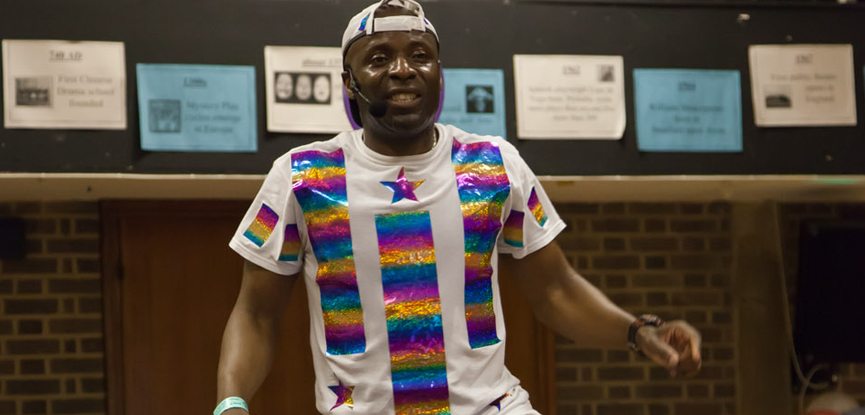
A few quick points. First thing in the morning I play music and write down the choreography. Nowadays it’s a Word document, but years ago it was pen and paper, sometimes I even dictate it to myself on my phone. Then, the movements will always change based on the energy and feedback you get from people. You have to understand that the movement you start out with, might not be the movement you end up with, you have to be adaptable.
You have to look at your participants and be able to pivot. When you stand in front of people, if you can see that something’s not working right, you can’t panic, you need to take the movement and adapt it. It’s about having the confidence to do that.
My final point is: Luck is where energy and preparedness meet. I also say that LUCK is labour under correct knowledge.
Finally, what are the most important pieces of advice you could offer newly qualified instructors starting out?
Don’t be scared of being you in front of people. You need to use your natural personality. Also, you need to use music that you personally love and be prepared. If you’re prepared then it’s one less thing you have to focus on while you’re teaching. There’s nothing worse than getting in front of people and being like a rabbit in headlights and it all goes blank.
If that moment ever comes and you’re prepared then you can keep going.
